Jinshan Tang
A Bilayer Segmentation-Recombination Network for Accurate Segmentation of Overlapping C. elegans
Nov 26, 2024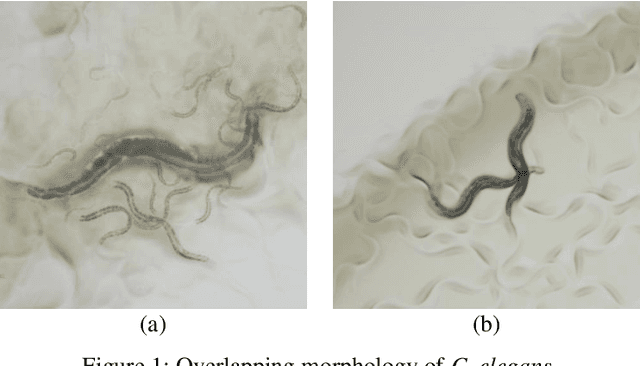
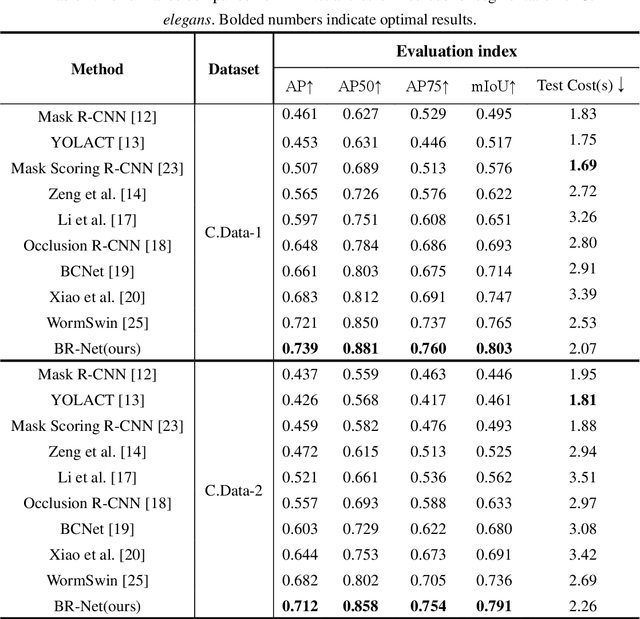
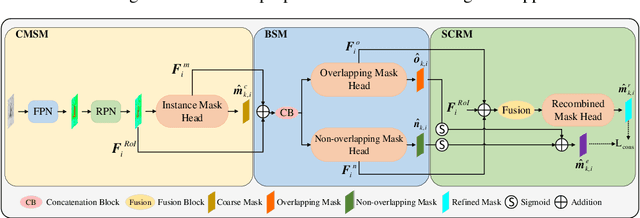
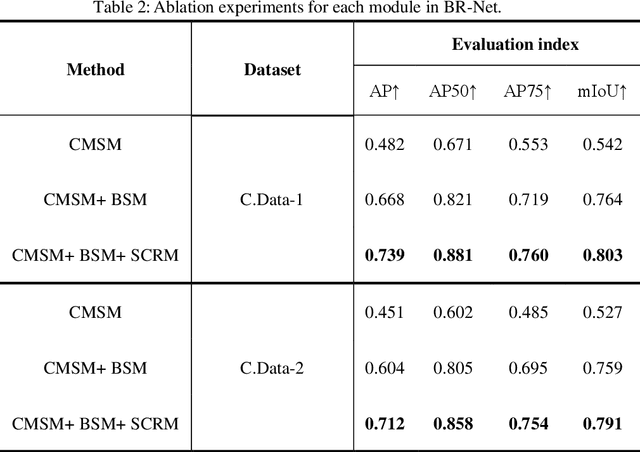
Abstract:Caenorhabditis elegans (C. elegans) is an excellent model organism because of its short lifespan and high degree of homology with human genes, and it has been widely used in a variety of human health and disease models. However, the segmentation of C. elegans remains challenging due to the following reasons: 1) the activity trajectory of C. elegans is uncontrollable, and multiple nematodes often overlap, resulting in blurred boundaries of C. elegans. This makes it impossible to clearly study the life trajectory of a certain nematode; and 2) in the microscope images of overlapping C. elegans, the translucent tissues at the edges obscure each other, leading to inaccurate boundary segmentation. To solve these problems, a Bilayer Segmentation-Recombination Network (BR-Net) for the segmentation of C. elegans instances is proposed. The network consists of three parts: A Coarse Mask Segmentation Module (CMSM), a Bilayer Segmentation Module (BSM), and a Semantic Consistency Recombination Module (SCRM). The CMSM is used to extract the coarse mask, and we introduce a Unified Attention Module (UAM) in CMSM to make CMSM better aware of nematode instances. The Bilayer Segmentation Module (BSM) segments the aggregated C. elegans into overlapping and non-overlapping regions. This is followed by integration by the SCRM, where semantic consistency regularization is introduced to segment nematode instances more accurately. Finally, the effectiveness of the method is verified on the C. elegans dataset. The experimental results show that BR-Net exhibits good competitiveness and outperforms other recently proposed instance segmentation methods in processing C. elegans occlusion images.
An EnKF-LSTM Assimilation Algorithm for Crop Growth Model
Mar 06, 2024Abstract:Accurate and timely prediction of crop growth is of great significance to ensure crop yields and researchers have developed several crop models for the prediction of crop growth. However, there are large difference between the simulation results obtained by the crop models and the actual results, thus in this paper, we proposed to combine the simulation results with the collected crop data for data assimilation so that the accuracy of prediction will be improved. In this paper, an EnKF-LSTM data assimilation method for various crops is proposed by combining ensemble Kalman filter and LSTM neural network, which effectively avoids the overfitting problem of existing data assimilation methods and eliminates the uncertainty of the measured data. The verification of the proposed EnKF-LSTM method and the comparison of the proposed method with other data assimilation methods were performed using datasets collected by sensor equipment deployed on a farm.
Attention-based Efficient Classification for 3D MRI Image of Alzheimer's Disease
Jan 25, 2024Abstract:Early diagnosis of Alzheimer Diagnostics (AD) is a challenging task due to its subtle and complex clinical symptoms. Deep learning-assisted medical diagnosis using image recognition techniques has become an important research topic in this field. The features have to accurately capture main variations of anatomical brain structures. However, time-consuming is expensive for feature extraction by deep learning training. This study proposes a novel Alzheimer's disease detection model based on Convolutional Neural Networks. The model utilizes a pre-trained ResNet network as the backbone, incorporating post-fusion algorithm for 3D medical images and attention mechanisms. The experimental results indicate that the employed 2D fusion algorithm effectively improves the model's training expense. And the introduced attention mechanism accurately weights important regions in images, further enhancing the model's diagnostic accuracy.
A Deep Learning-Based Method for Automatic Segmentation of Proximal Femur from Quantitative Computed Tomography Images
Jul 01, 2020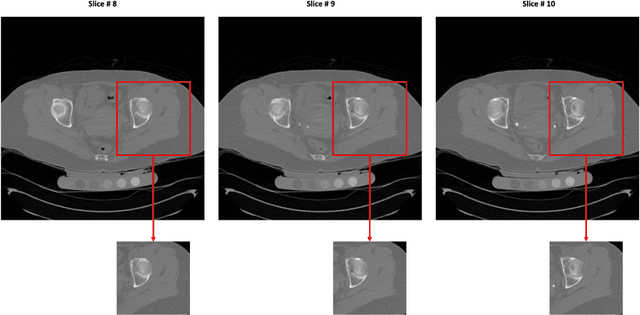
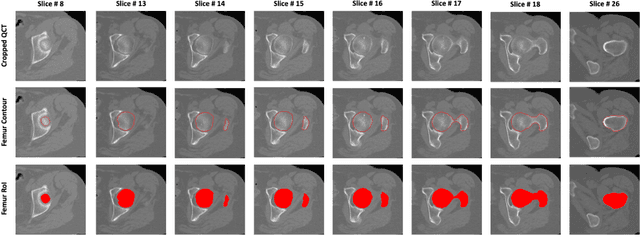

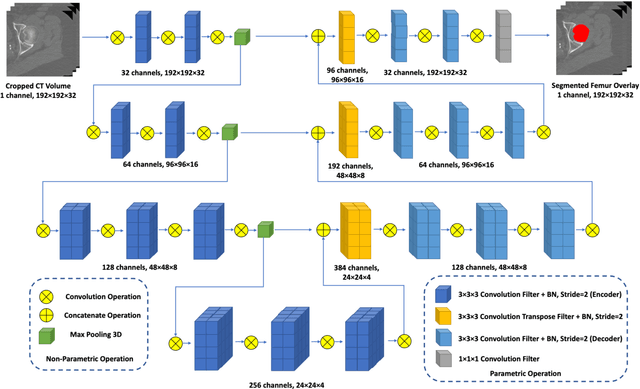
Abstract:Purpose: Proximal femur image analyses based on quantitative computed tomography (QCT) provide a method to quantify the bone density and evaluate osteoporosis and risk of fracture. We aim to develop a deep-learning-based method for automatic proximal femur segmentation. Methods and Materials: We developed a 3D image segmentation method based on V-Net, an end-to-end fully convolutional neural network (CNN), to extract the proximal femur QCT images automatically. The proposed V-net methodology adopts a compound loss function, which includes a Dice loss and a L2 regularizer. We performed experiments to evaluate the effectiveness of the proposed segmentation method. In the experiments, a QCT dataset which included 397 QCT subjects was used. For the QCT image of each subject, the ground truth for the proximal femur was delineated by a well-trained scientist. During the experiments for the entire cohort then for male and female subjects separately, 90% of the subjects were used in 10-fold cross-validation for training and internal validation, and to select the optimal parameters of the proposed models; the rest of the subjects were used to evaluate the performance of models. Results: Visual comparison demonstrated high agreement between the model prediction and ground truth contours of the proximal femur portion of the QCT images. In the entire cohort, the proposed model achieved a Dice score of 0.9815, a sensitivity of 0.9852 and a specificity of 0.9992. In addition, an R2 score of 0.9956 (p<0.001) was obtained when comparing the volumes measured by our model prediction with the ground truth. Conclusion: This method shows a great promise for clinical application to QCT and QCT-based finite element analysis of the proximal femur for evaluating osteoporosis and hip fracture risk.
 Add to Chrome
Add to Chrome Add to Firefox
Add to Firefox Add to Edge
Add to Edge